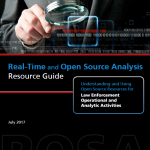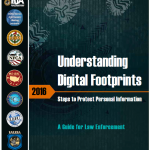
Open source platforms can be used by criminals to instigate or conduct illegal activity and by terrorists to recruit and encourage new members, disseminate violent extremist messaging through video or documents, coordinate activities, and claim responsibility for attacks around the world. As such, law enforcement and analytic personnel should understand the uses of social media and be aware of social media tools that can be used to document criminal and terrorist activity. A wide variety of open source analysis tools—both no-cost and paid—is available to public and private sector organizations, including law enforcement and analytic personnel, and the technology continues to evolve. ROSA tools that access only publicly available information and are capable of searching multiple platforms simultaneously are assets for maximizing efficiency during authorized uses by law enforcement and analytic personnel.

